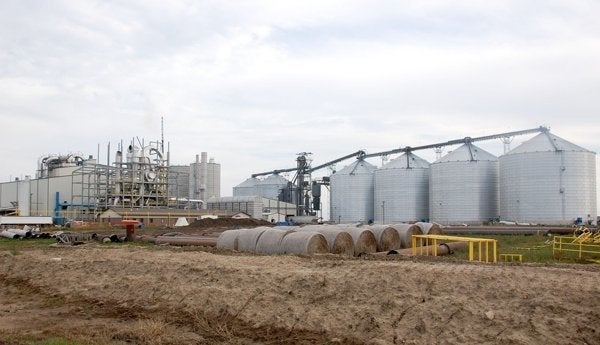
Last week Congress passed a pork laden farm bill that could cost American taxpayers up to $289 billion over five years. At the same time, a global food crisis is deepening. Average prices for wheat, rice, and corn have gone up 41 percent since October 2007. Food riots are rocking cities from Haiti to Egypt to Ethiopia. Tragically, U.S. agricultural policies, designed to placate American agribusiness, are contributing significantly to today's global food crisis.
In the short-term, skyrocketing food prices have been driven by a perfect storm of rising reliance on biofuels; droughts and floods in key food producing regions; the surging price of oil, which raises the costs of petrochemical fertilizers and transportation; and rising demand for meat in China and other newly prosperous areas of the developing world.
According to the International Food Policy Research Institute, 30% of the U.S. maize crop currently goes to ethanol production, and biofuel subsidies range between US$11 billion and US$13 billion a year. By encouraging U.S. farmers to switch land away from food production, U.S. subsidies for ethanol contribute to the biofuel dimension of the food crisis.
In the long-term though, the real damage done by America's agricultural policies has been to undermine agriculture in developing countries. This structural imbalance makes poor countries reliant on food imports and vulnerable to volatile international food markets; limits opportunities for agriculture exports; decreases global food supply; and prevents farmers in poor countries from quickly growing more food in response to rising demand.
Since WWII, U.S. farm policies have promoted the growth of agribusiness by guaranteeing prices to assure profitability as well as paying farmers not to grow in order to prevent a glut of food on the market. Developing country farmers simply cannot compete - domestically or internationally - with cheap subsidized rice, corn, and wheat from the United States. This market distortion undermines both public and private investment in food production in the global south.
When Peru introduced a "shock" import liberalization program in the 1990's to lower tariffs, food imports increased dramatically, particularly of cereals and rice. According to Oxfam International, increased food imports stiffened the market competition faced by smallholder farmers, who cultivate traditional Andean products like quinoa and potatoes. The availability of cheap, imported grain changed eating patterns in favor of wheat and rice, and precipitated a decline in potato consumption.
Cheap food from the U.S. reduces the incentive for developing country governments and the international development community to invest in increasing the productivity of small hold farmers in Africa, because even more productive crops would be competing against subsidized U.S. food exports. The green revolution of the 1960's in Asia - an important underpinning of subsequent economic growth - was spurred by advances in agricultural productivity targeted towards the soil, climate, and crops specific to the region. Farm yields doubled and tripled within a decade. Similar technological investments have not been made in African agriculture. In fact, public agricultural research and development spending actually declined during the 1990s. African farmers lack access to improved seeds and fertilizer, and many small producers grow less than one-fifth as much on the same amount of land as their counterparts in Asia.
The inability to compete with subsidized U.S. crops also reduces the incentive for governments to invest in the rural-to-urban transportation infrastructure urgently needed by farmers. Currently, poor transport infrastructure makes it very costly for rural farmers to export crops or get their goods to domestic urban centers. But even if transport costs were decreased significantly, the reductions might not be sufficient to overcome the subsidy advantage enjoyed by American agribusiness.
Moreover, competition from cheap U.S. food imports have encouraged some rural farmers to focus on subsistence farming or to abandon farming entirely and move to cities. At the same time, U.S. subsidies make it more difficult for food exporters to find buyers on the international market. Competition from U.S. subsidized agribusiness - both domestically and internationally - has shrunk agricultural capacity in developing countries, making it difficult for farmers to quickly grow more food now in response to rising prices.
The demand of a growing urban workforce for affordable food has historically played a key role in pushing governments and farmers to make food cheaper by boosting agricultural yields and reduce production costs. When urban food demand is met by subsidized food imports, there is less pressure for farmers to produce more, or for governments to improve agricultural productivity or transportation infrastructure so rural farmers can get their crops to cities. Being priced out of the international market depresses public and private investments even more. In a vicious circle, underinvestment contracts the agricultural sector, makes small hold farmers less competitive, and increases the price of food grown in developing countries compared to subsidized crops from the United States.
Ironically, artificially cheap global food prices over the past few decades, made possible by U.S. agricultural subsidies, are making the world's poor vulnerable to skyrocketing food prices today.
At the same time, U.S. food "aid" is more a vehicle to dump excess U.S. production than a benefit for hungry populations. Congress requires that food aid be purchased from U.S. growers and shipped overseas. This hurts developing country farmers by undercutting them in their local markets, further reducing domestic production. The policy also prevents the U.S. from contributing to the emergence of food futures markets in the global south. Lack of predictability often makes poor farmers reluctant to invest in improvements that may not turn a profit for several years. Futures contracts, common in the U.S. and Europe but virtually unheard of in rural Africa, Asia, or Latin America, would guarantee farmers' incomes and increase incentives to make investments with short-term costs but long-term gains.
Meeting the growing demand for food in the face of rising energy costs requires increasing the agricultural productivity of small-hold staple food farmers in Africa and the Caribbean; reducing reliance on oil dependent inputs like petrochemical fertilizer; improving the transport infrastructure necessary for developing country farmers to be competitive; and raising the profits realized by small farmers in poor countries, in order to encourage them to produce more. Key is improving agricultural yields using techniques other than oil based petrochemicals. These measures will reduce poor countries' reliance on volatile international oil and food markets and increase global food supply.
A long term solution to the food crisis is very difficult so long as U.S. agricultural policies continue to distort the market. The real tragedy of the global food crisis is that the hunger gripping families from Port-au-Prince, Haiti to Yaounde, Cameroon is not inevitable. The blame rests, at least in part, with us.
